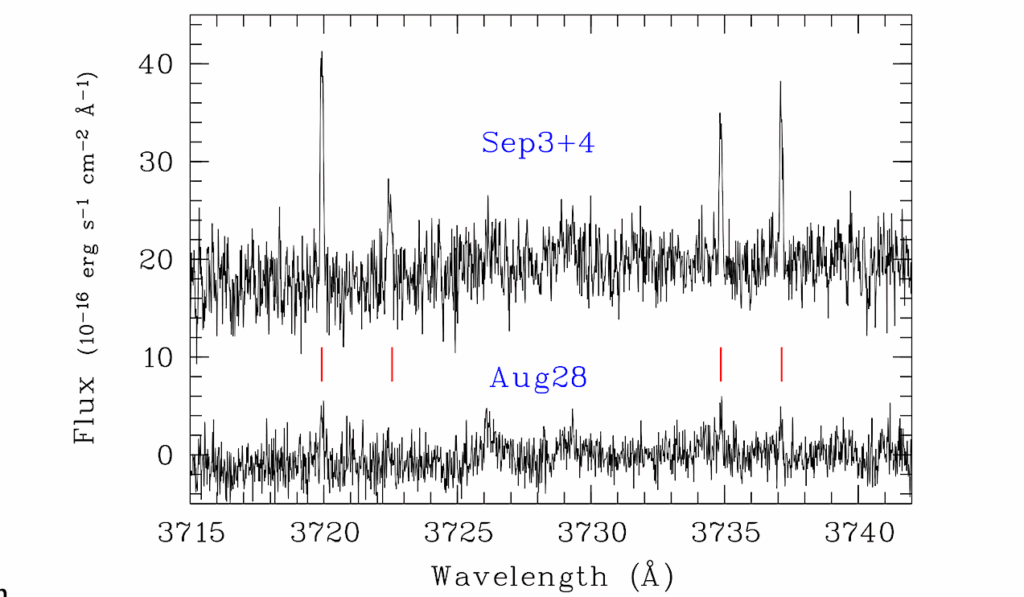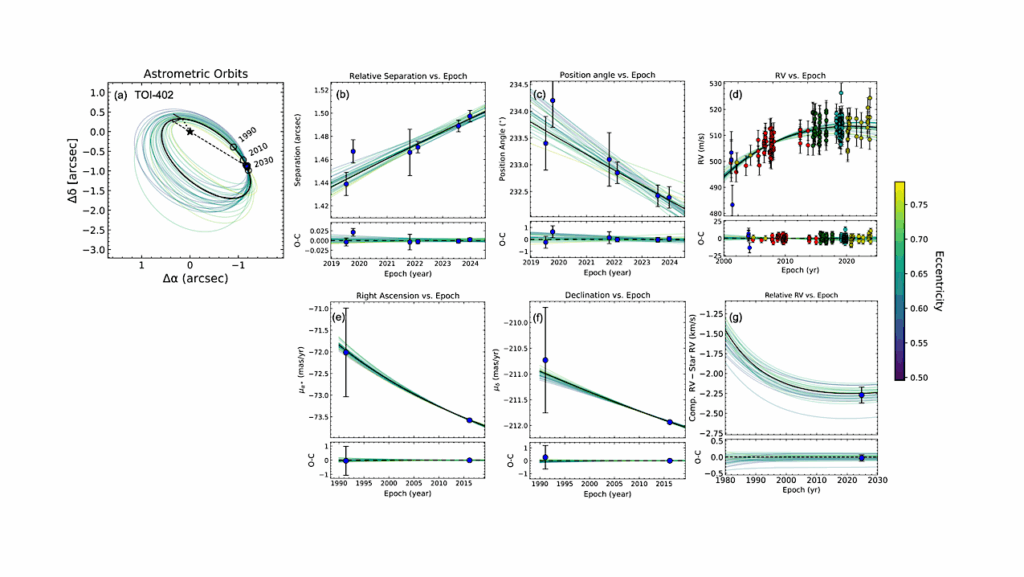VaTEST III: Validation Of 8 Potential Super-Earths From TESS Data

NASA’s all-sky survey mission, the Transiting Exoplanet Survey Satellite (TESS) is specifically designed to detect transiting exoplanets orbiting bright stars.
TESS has already identified about 400 transiting exoplanets, as well as approximately 6000 candidates awaiting validation. In this work, we present the outcomes of the project Validation of Transiting Exoplanets using Statistical Tools (VaTEST), an ongoing endeavor dedicated to validating and characterizing new exoplanets using statistical validation tools.
We have validated eight potential super-Earths using a combination of ground-based telescope data, high-resolution imaging, and the statistical validation tool known as TRICERATOPS. These validated planets bear the designations: TOI-238b (1.61+0.09−0.10 R⊕), TOI-771b (1.42+0.11−0.09 R⊕), TOI-871b (1.66+0.11−0.11 R⊕), TOI-1467b (1.83+0.16−0.15 R⊕), TOI-1739b (1.69+0.10−0.08 R⊕), TOI-2068b (1.82+0.16−0.15 R⊕), TOI-4559b (1.42+0.13−0.11 R⊕), and TOI-5799b (1.62+0.19−0.13 R⊕).
We also studied the synthetic transmission spectra of all eight validated planets in the HST and JWST band-pass using PLATON and PandExo. Among all these validated planets, six of them fall within the region known as ‘keystone planets,’ which makes them particularly interesting for study. Based on the location of TOI-771b and TOI-4559b below the radius valley we characterized them as likely super-Earths, though radial velocity mass measurements for these planets will provide more details about their characterization.
It is noteworthy that planets within the size range investigated herein are absent from our own solar system, making their study crucial for gaining insights into the evolutionary stages between Earth and Neptune.
Priyashkumar Mistry, Aniket Prasad, Mousam Maity, Kamlesh Pathak, Sarvesh Gharat, Georgios Lekkas, Surendra Bhattarai, Dhruv Kumar, Jack J. Lissauer, Joseph D. Twicken, Abderahmane Soubkiou, Francisco J. Pozuelos, Jon Jenkins, Keith Horne, Steven Giacalone, Khalid Barkaoui, Mathilde Timmermans, Cristilyn N. Watkins, Ramotholo Sefako, Karen A. Collins, Avi Shporer, Zouhair Benkhaldoun, Chris Stockdale, Emmanuël Jehin, Felipe Murgas, Martin Paegert, Michael B. Lund, Norio Narita, Richard P. Schwarz, Robert F. Goeke, Thiam-Guan Tan, Yugo Kawai
Comments: In Review: Publications of the Astronomical Society of Australia
Subjects: Earth and Planetary Astrophysics (astro-ph.EP); Instrumentation and Methods for Astrophysics (astro-ph.IM)
Cite as: arXiv:2311.00688 [astro-ph.EP] (or arXiv:2311.00688v1 [astro-ph.EP] for this version)
Submission history
From: Sarvesh Gharat
[v1] Wed, 1 Nov 2023 17:45:05 UTC (29,975 KB)
https://arxiv.org/abs/2311.00688
Astrobiology,








